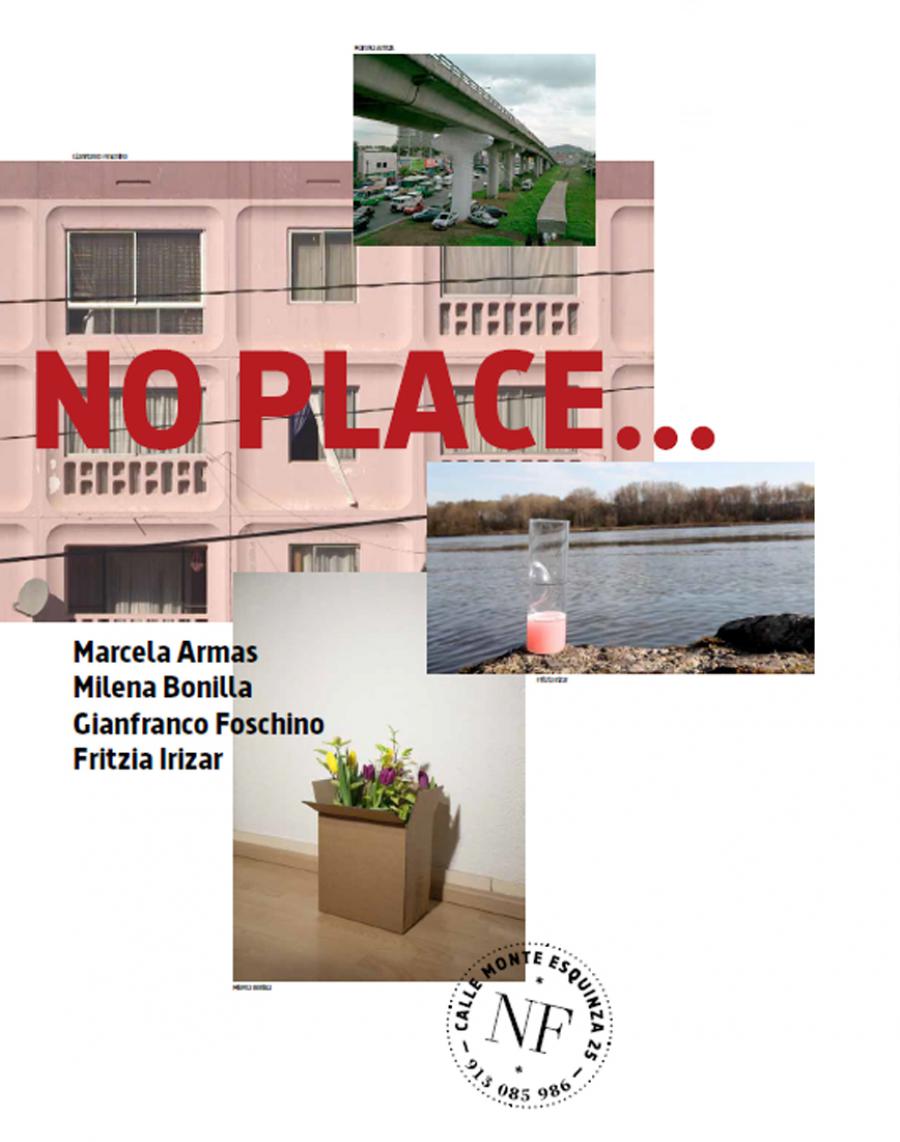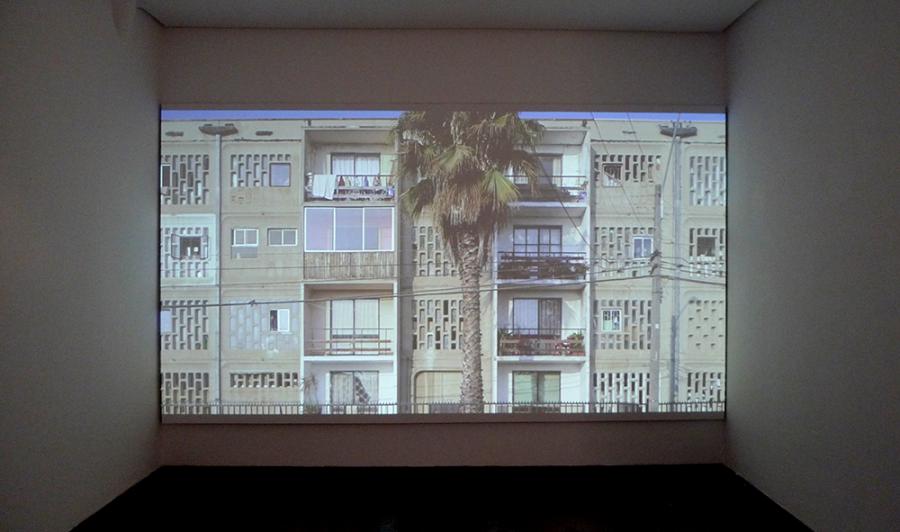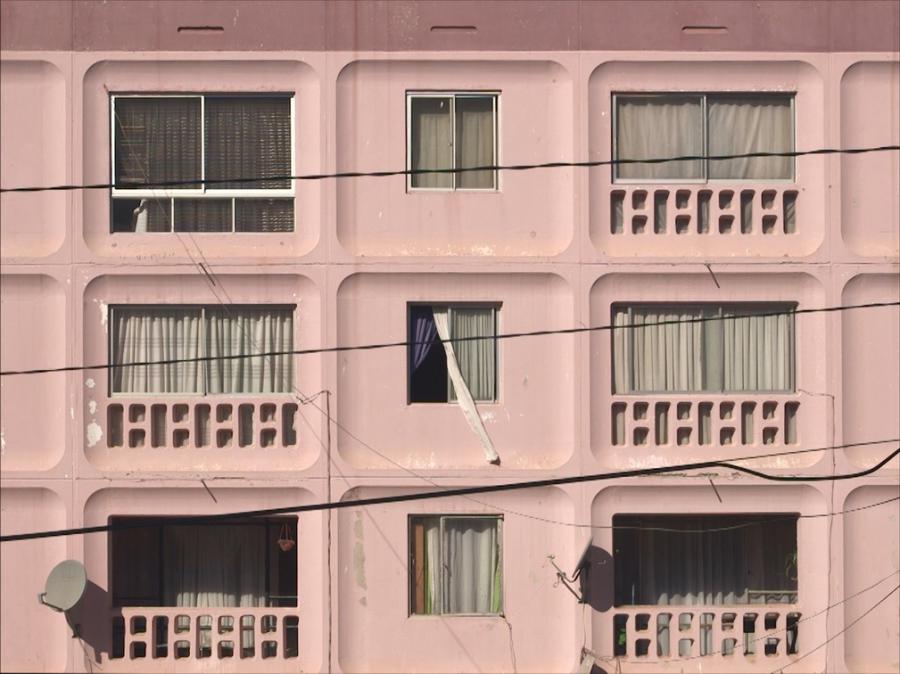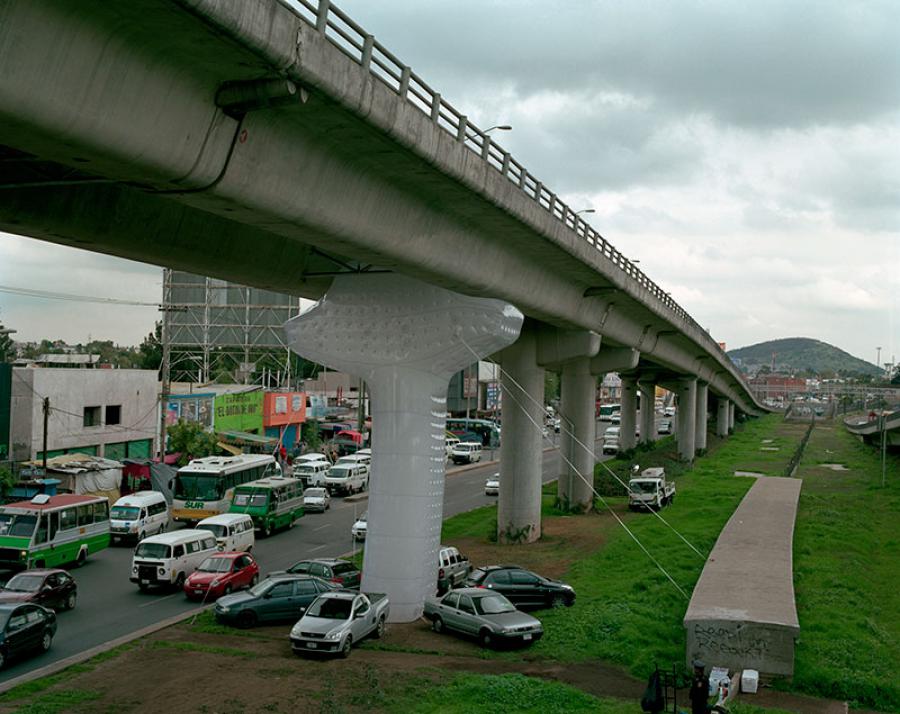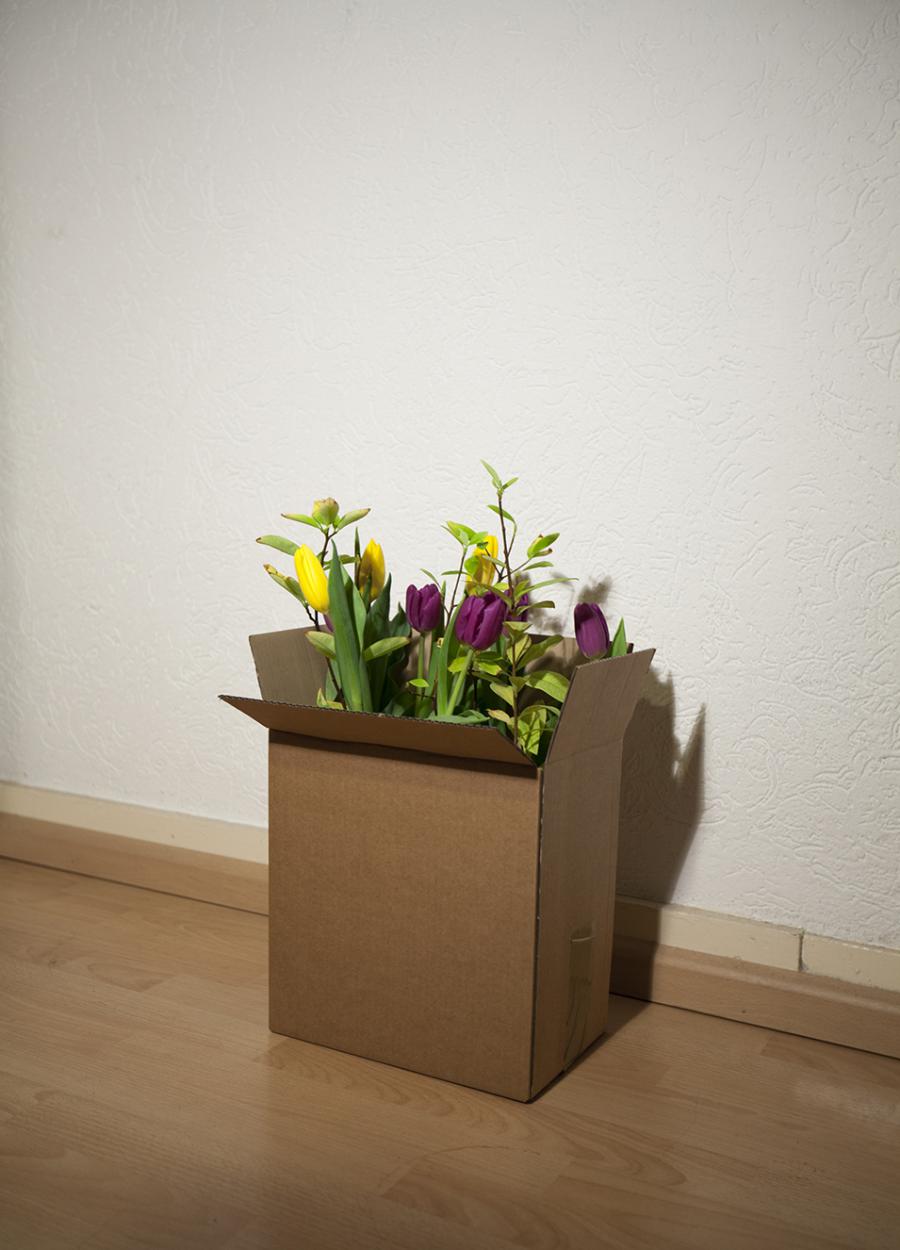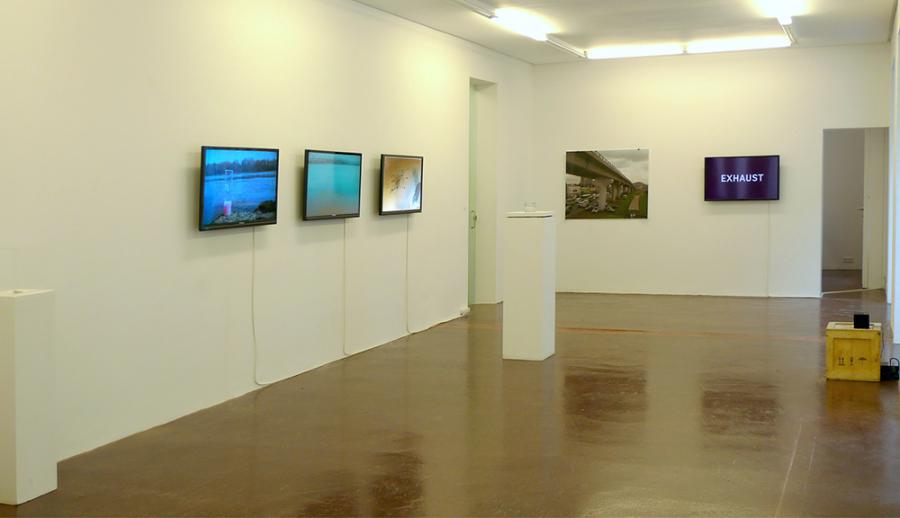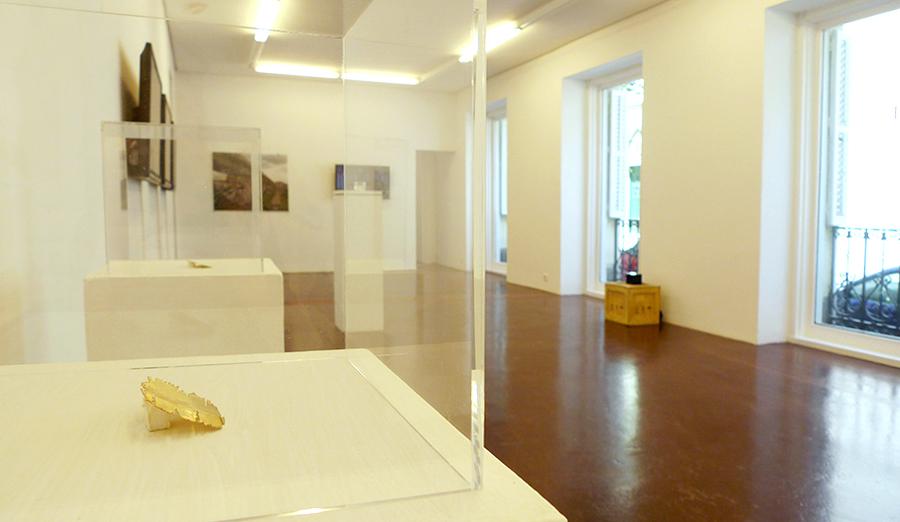NO PLACE
April 28 / July 31 2015Marcela Armas
Milena Bonilla
Gianfranco Foschino
Fritzia Irizar
“Be realistic, demand the impossible!” as the May ’68 slogan went. But pushed further this idea of impossible thinking can become practical. The problem with Utopia, as the horrific social twentieth-century experiments of Nazism and totalitarian Communism demonstrated, is that dreams start to be taken for realities. Once this happens, there is a tendency to brutalize the present in order to bring it into line with an imagined future. But what if we imagine Utopia as only a dream?This is what Thomas More does in his Utopia: he sketches a picture of an attractive and compelling world for us to lose ourselves within. We live in it, we experience it. And then, he takes it away from us by calling it “no-place.” Because a dream is just a dream, this fantasy of the future cannot be sold to us as a place in which we can, and thus must resideThis Utopia in its true meaning of no-place, still retains its political function as an ideal: a loadstone to guide us and a frame within which to imagineThe idea of this exhibition arises from the necessity of a utopian thinking to modify progressive politics. Without the utopian thinking we are tied by the tyranny of the possible, and realistic thinking is no longer the appropriate answer to nowadays situation.
During years, the politic and social critics have been developed from a realistic point of view. Reality was shown to the spectator to make him react to the hard evidence of a series of injustices, or duels.
Now, in a time when we live over exposed to images, immersed in a visual culture that doesn’t skimp on details, show reality is no longer efficient.
It is because of that that we need a reversed attitude. From a creative point of view, that doesn´t have to adapt itself to reality, political critic or activism can be even more efficient or transgressive. Today’s political problem is not a lack of analysis, or revealing truth, but the radical necessity of imagination.
Milena Bonilla, “An Enchanted Forest”
2013 – 2014
Two books mention the existence of an Enchanted Forest in the area that is covering the former Bohemian Forest, which has been divided between the Bavarian and Šumava Natural Parks. The parks belong to Germany and the Czech Republic correspondingly. The first book narrates and analyzes a discovery made by a group of scientists between 2002 and 2011. They start to notice, while they were tracking Red Deer population as a control routine, that Red Deer females from both countries are not crossing the former Iron Curtain border, even though the fence has been removed since 1989.
The second book is narrating, under the same title, the story of an anarchist group called Ahornia whose members used to gather in the same forest area. The book is a compilation of a series of statements that the secret group wrote in 1967, one year before 1968’s Prague Spring.
“In the mood for love, or how to move a criminal”, 2014, is a photograph showing a floral arrangement, mainly of tulips. Looks like a beautiful present, but actually it was made to transport cocaine plants needed for an installation through Europe, from Amsterdam to Paris, and Spain.
Marcela Armas, “Exhaust and Obstruction”, 2009, with two-stroke engine are part of a project intended to examine the relationship of using energetics of fossil origin to conform urban space from the presence of combustion residuals in the environment, and which are left as a disperse memory of the urban activity.
The project is based on a variety of plastic wrappings with various forms and capacities. Such wraps act as containers of gaseous residuals expelled through the exhaust of several internal combustion vehicles that are running. The work outstands the close and reciprocal relationship between those machines and the city from their potential to visualize contaminants that occupy a place on the space.
“Incandescent Nights”, 2008, is a work that refers to geographic locations with light pollution and high heat emissions, which correspond to human settlements in the context of an important debate on global warming. A meditation on the city, made visible by its power consumption, the piece explores urban morphologies. Observed at the distance, cities on the earth’s surface resemble functional systems such as live organisms and galaxies. Paradoxically confronting the beauty of a city’s prosperous condition with its destructive nature.
Fritzia Irizar Untitled (Illusion and Disappointment II) After collecting discarded instant lottery tickets, , a graphologist interpreted the marks—left on the stubs when the buyer scraped the removable strip—in order to analyze the personalities of the people who scratched and threw away the tickets. The interpretations are presented as audio clips accompanying a series of digital prints that correspond to the marks on each lottery ticket. The extracted marks of the piece Untitled (Illusion and Disappointment I), 2011 were transferred onto gold sheets to capture, through a material of great monetary value, the disappointment of people.
“Untitled. How to perfume the Danube with 100ml. of roses’ water”, 2013
To perfume the Danube with 100 ml. of roses’ water is, in itself, a utopia. Even this, the viewer can see the action, listen to the river, and smell the roses’ water, imagining the Danube perfumed. So, it is true that we can perfume the Danube with 100ml of water roses’. “The piece requires of the spectator to be finished, and the willingness of the spectator to imagine. Is an act of faith. In some way, everything works like this. When we read a news, or we see a work of art, it is us who believe in it, and turn it real”
Gianfranco Foschino Monolith Controversies, 2014, presented in the Chilean Pavillion of the Architecture Biennale of Venice, is a project about the concrete wall panels produced by the Chilean KPD plant and Donated in 1971 by the Soviet Union to support president Salvador Allende’s Democratic Road to Socialism. Producing prefabricated housing components, this panel has since been the subject of several political and ideological controversies. Allende himself signed the wet concrete, only for his gesture to be later covered over by Augusto Pinochet, who hid it beneath a representation of the Virgin and Child framed by two colonial lamp fixtures. Gianfranco Foschino has been researching the houses in Chile built with that concrete panel, and how these facades reflect todays living in Chile.


